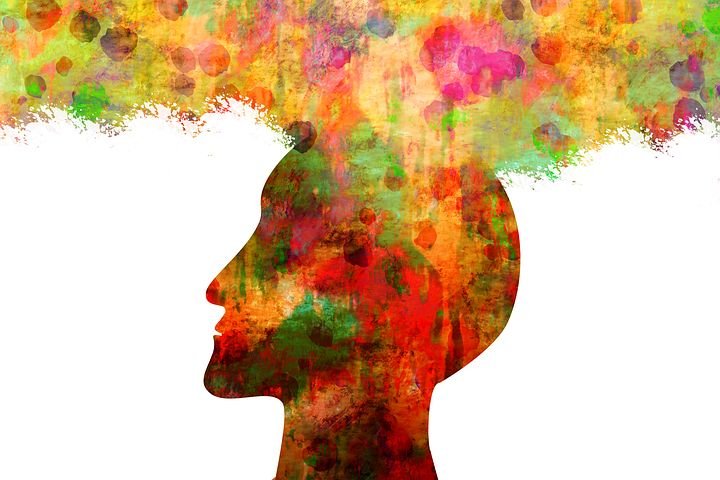Myers-Briggs Personality Test Debunked
January 29, 2021
“It’s so incredible to finally be understood” is a sentiment displayed prominently at the top of the Myers-Briggs 16 Personalities Test, written by Isabel Briggs Myers and Katharine Cook Briggs in 1962. The test is based on the theories of Carl Jung, a psychiatrist who surmised that four distinct traits exist to sum up a person’s personality. What is astounding, however, is the immense popularity the test carries, even today. So far, the online version of the test has been taken 358,155,579 times. But what is it that makes this test, just like many other online personality tests, so appealing?
The four distinct traits of the Myers-Briggs test include Extraversion vs. Introversion, Sensation vs. Intuition, Thinking vs. Feeling, and Judging vs. Perceiving. Jung theorized that everyone falls under either trait, giving each person four letters that will then place them into a category. According to the test, these various combinations result in 16 identities, each with its own unique name and traits. They are comprised of the Architect, the Logician, the Commander, the Debater, the Advocate, the Mediator, the Protagonist, the Campaigner, the Logistician, the Defender, the Executive, the Consul, the Virtuoso, the Adventurer, the Entrepreneur, and the Entertainer. People are sorted into their respective categories after choosing the extent to which they identify with about 100 statements, on a range from strongly agreeing to strongly disagreeing. A person will then be given an extensive report of their results that includes the percentage of how much they fall into each of the four traits, and they are placed in the category that they match the most with. For example, whether a person is 51% observant and 49% intuitive or 100% observant and 49% intuitive, they will be placed in the same observant category.
People are obsessed with themselves. They love talking about themselves, thinking about themselves, and listening to others talk about them. Especially today, people see their image everywhere and can easily become obsessed with how they will be perceived. For this reason, it is no mystery that quizzes about the self have peaked in popularity. Whether it be Buzzfeed quizzes that prompt you to choose ten breakfast foods and become magically paired with a celebrity to date or the Myers-Briggs 16 Personalities Test, which does have some scientific backing, people enjoy hearing about themselves. It must also be taken into account that people enjoy the actual process of taking these tests, since it is both fun and fulfilling to define yourself and then get rewarded with a category afterward. Furthermore, these tests can also bring people relief. It feels good to think that you are similar to your peers if maybe you and your friend share the same result. And finally the simple idea of flattery. We live in an age in which a simple 15-minute test can flood you with compliments—that you are funny, analytical, outgoing, responsible, friendly, etc.
There is no doubt that these tests are fun and appealing to take, but do they actually mean anything? The Myers-Briggs Test divides everyone into 16 distinct boxes. But just how distinct are they? If you ignore your own results and take a look at the 15 others, you will find that the traits given are not only similar but also applicable to a much wider range of people than it might seem. Let’s take, for example, two opposite traits: ISTJ and ENFP. Someone who falls under the ISTJ category will simply read their own results, become placated by the bland flattery, and move on (just like everyone, including myself, who takes this test for the first time). But let’s take a closer look. According to the test, people categorized into ISTJ tend to be responsible, sincere, analytical, reserved, realistic, systematic, hardworking, trustworthy, and have sound practical judgment. On the other hand, people categorized into ENFP, the complete opposite, are enthusiastic, creative, spontaneous, optimistic, supportive, playful, value inspiration, enjoy starting new projects, and see potential in others. Sticking with the same example, I find it hard to believe that a person who falls under the ISTJ category will identify with their own results more than that of the counterpart. The human personality is multidimensional; it cannot be summed up in nine simple traits that most people can, at one point or another, see themselves demonstrating.
Even with these ambiguous and vague results, people still respond to the test as if it figured them out with shocking accuracy. One of many quotes at the bottom of the test is Ashley’s, who was put into “the Adventurer” category. She said, “I can’t believe how accurate this was… Word for word. I never felt so understood. I thought I was the only one of my kind.” My belief is that many of the results of the test can really just be applicable to the whole human race. The test tells people that they desire close bonds, value lifelong friendships, and can sometimes be self-conscious. Sound like most of the people you know? Me too. Having said that, would that then mean that people are more alike than different? And if so, then maybe everyone really can be split up into just 16 personalities. My advice would be to try taking the test. Like Ashley and many other takers, you might find that your results really are accurate and personal to you. But I also advise looking through the other possible results. Do you identify with those as well?

















































































































































